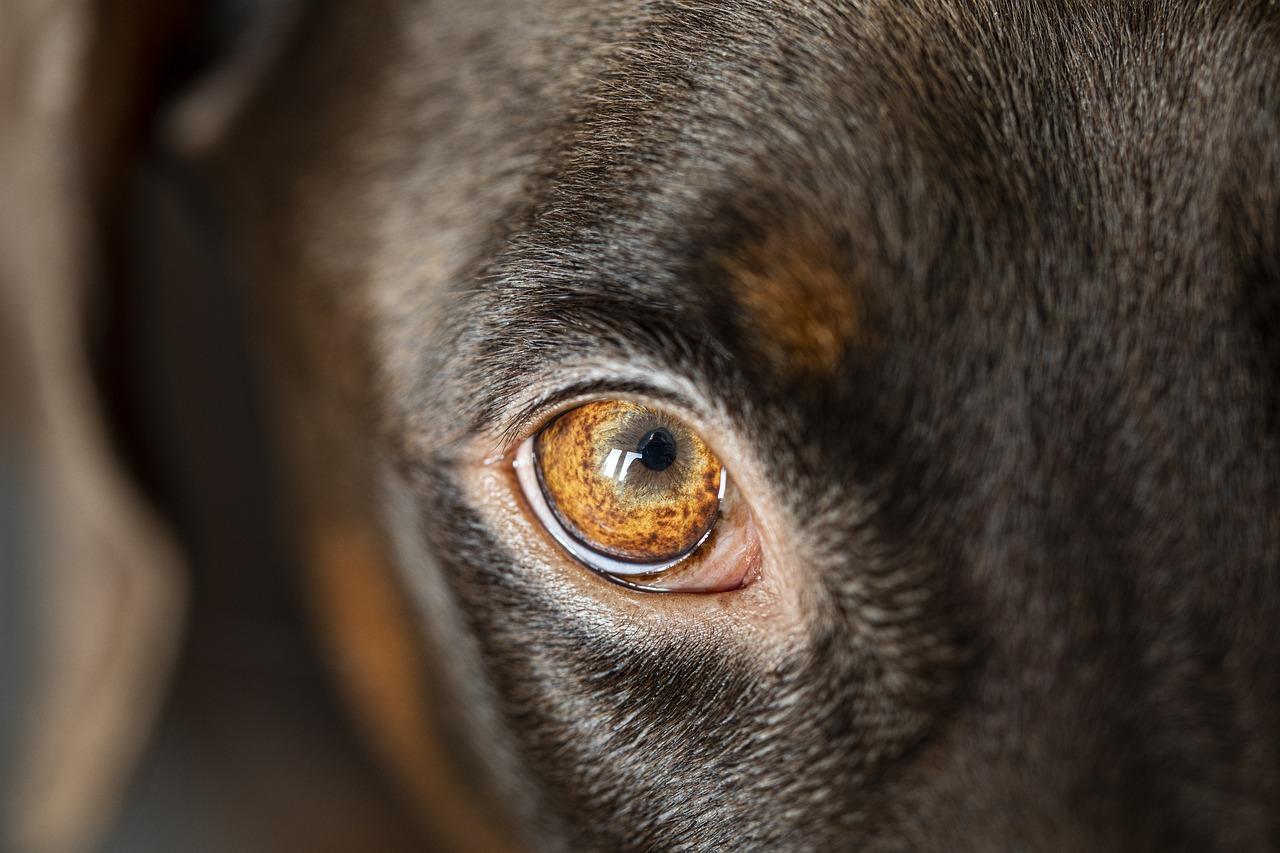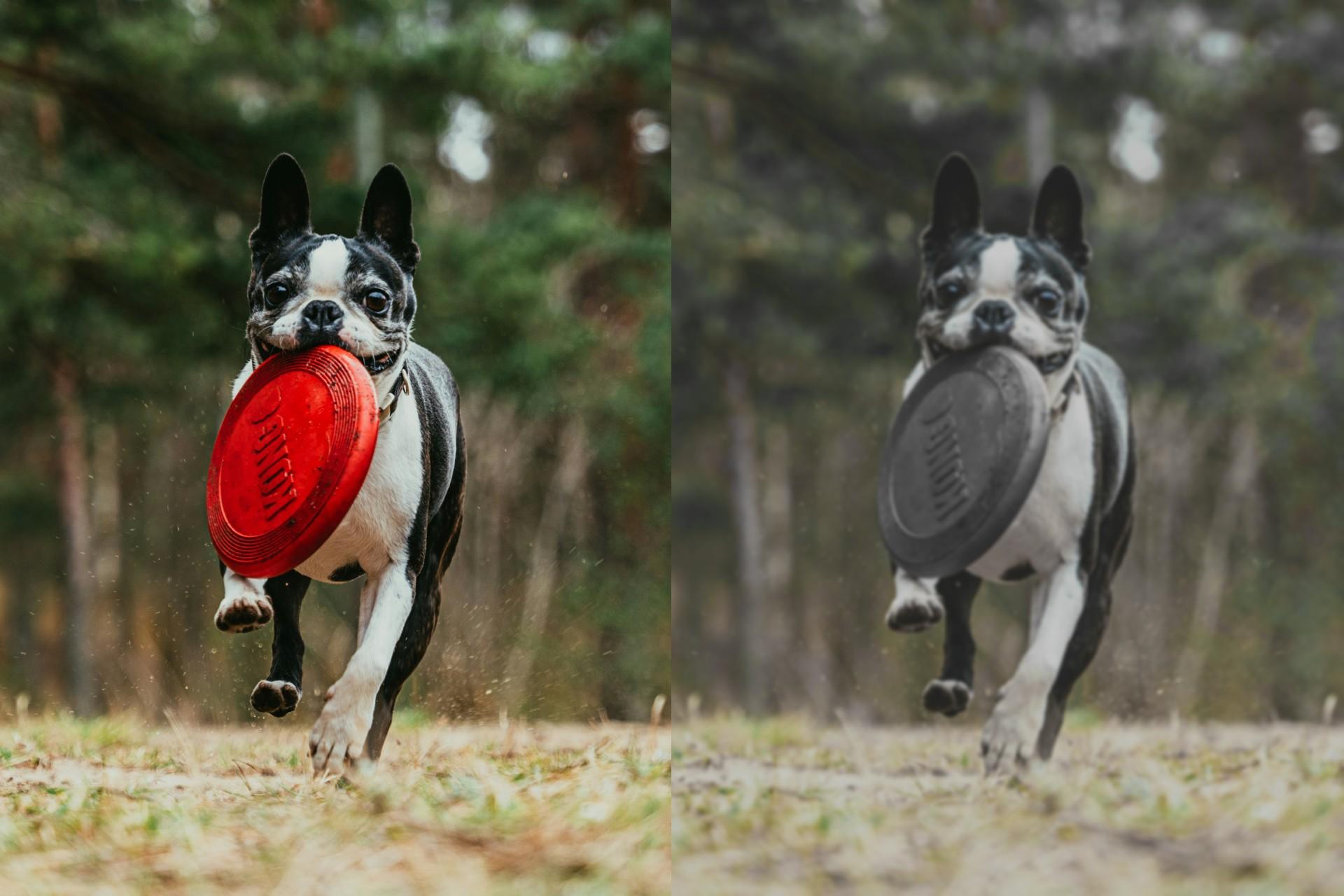No Products in the Cart
Written by Crystal Moore | Last updated 23/09/24

When shopping for the perfect toy for your dog, its colour most likely influences your decision. If you're like many other dog owners, you might have spotted a bright red ball in the pet shop and thought, "This will be perfect for fetch". However, when you start playing fetch, your dog just can't seem to find it in the grass. So, why can't your dog see the bright red ball?
In fact, our dogs simply don't see colours the way that we do, and learning the difference between ours and our dog's vision can help explain their "selective" vision.
Yes, dogs can see in colour. However, the colours they see might not be what you'd expect them to be. This is because a misconception that became common knowledge amongst the people in the 1960s was that dogs could only see in black and white. To this day, a lot of dog owners still believe that their dogs can only see in black and white.
The earliest known study to disprove that dogs could only see black and white was 'Color vision in the dog' by Jay Neitz, Timothy Geist and Gerald H. Jacobs. The research was conducted on 3 dogs, and results showed that dogs have dichromatic vision, meaning they could see in colour but with a more limited range than humans.
A study called 'Vision in dogs', published in 1995, wanted to test the visual abilities of dogs. The results from this study discovered that although a dog's vision was inferior to humans in some ways, it was also superior in others. For example, the results found they have a wider field of view, functionality in dim lighting, and the ability to detect motion. Similar to wolves, these make them a more efficient predator.

Although dogs can see in colour, the range of colours they can see is much different to what we can see. To help explain, there are cones within the retina that help us perceive colour. Dogs have 2 types of cones that help them to see shades of blue and yellow, which is also known as dichromatic vision. On the other hand, humans have 3 types of cones, the third being red-green cones. This is also referred to as trichromatic vision.
Since dogs do not have a third cone, colours such as red and green appear grey or brown to them. For example, consider the bright red ball hidden in green grass. Humans can instantly spot where the ball has fallen. However, since both the ball and grass appear similar in colour, the ball camouflages straight into the grass. Opting for a blue ball is the best option since it'll be easier for your furry friend to spot.
The main difference between ours and our dog's vision is the colour spectrum that's seen. The majority of humans can see a full range of colours, whereas dogs are limited to shades of blue and yellow. Here are the differences between dog and human vision:
Colour perception
Night vision
Motion detection
Field of view
Focusing ability
Visual acuity
Brightness sensitivity
Colours, such as blue and yellow could be considered dog-friendly. Your dog is able to see shades of blue and yellow. Therefore, if you are choosing a toy, it is best to pick out one of these colours so your dog can easily spot it.
Due to a dog's visual acuity, whatever is on the TV will most likely be less detailed and blurred when comparing it to our vision. Moreover, the colours that they see will be different. Your dog will be more responsive to the movements and sounds coming from the TV.
You will be happy to know that there are studies to support the idea that dogs...
by Crystal Moore on September 12, 2024
Discover how long you can leave a dog alone at home. Learn about ideal...
by Crystal Moore on August 09, 2023
Dogs wag their tails as a tool for communication to both humans and other dogs...
by Crystal Moore on August 22, 2024
Separation anxiety occurs when your dog is left alone. According to a...
by Crystal Moore on July 05, 2024
